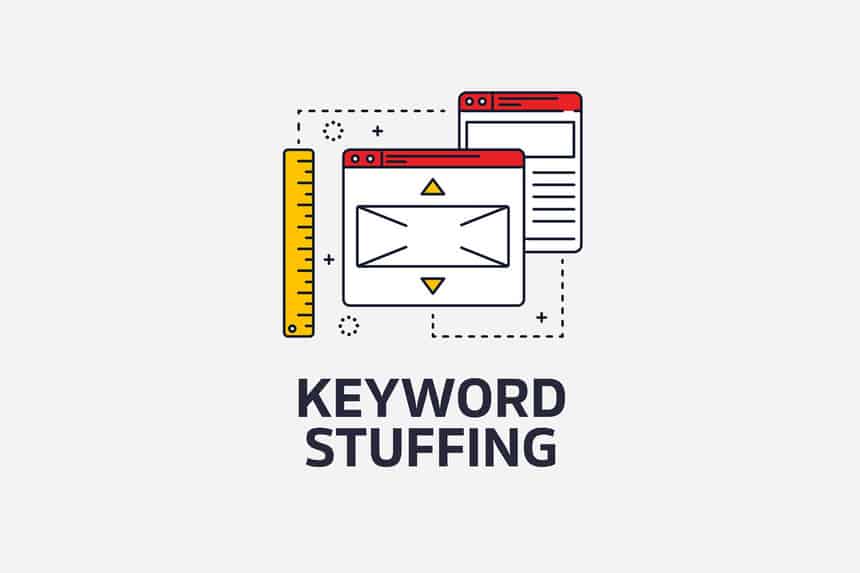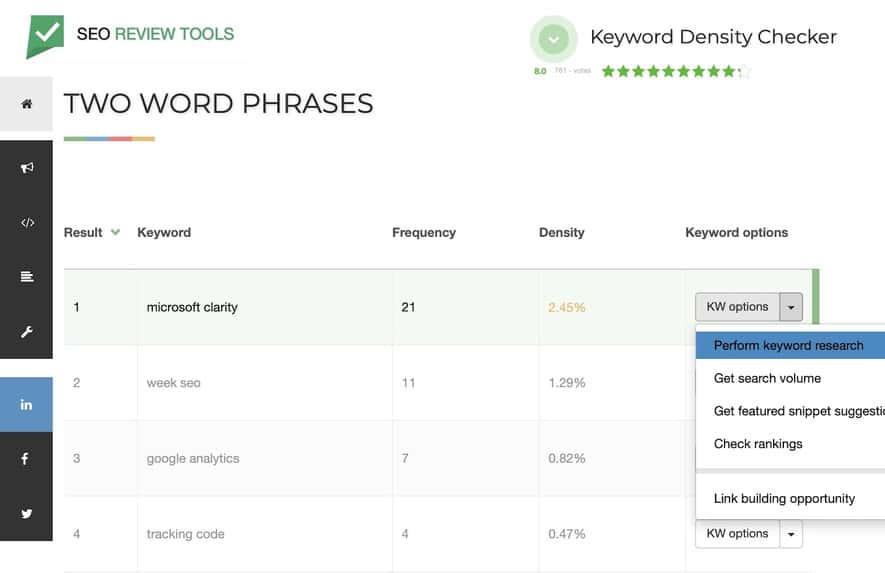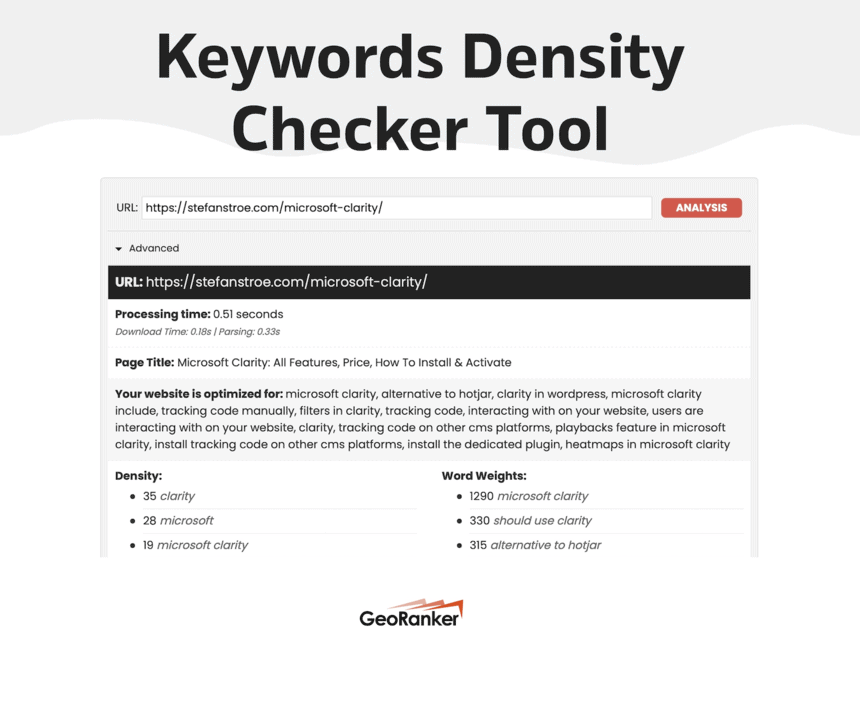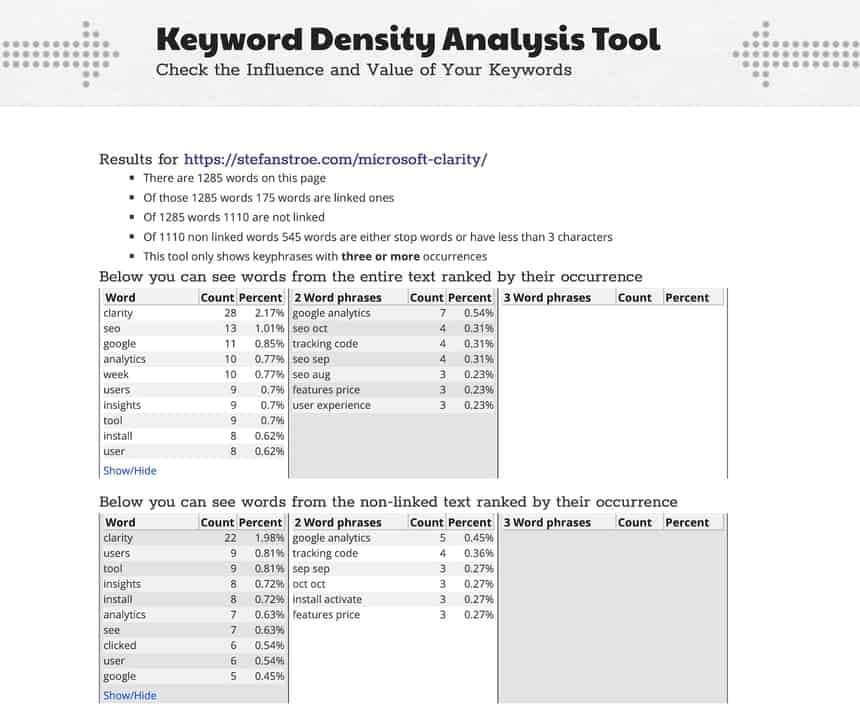Keyword stuffing is a black-hat SEO technique. Expect the worst in rankings if you use it.
In this article, I will walk you through the latest Search Engine recommendations regarding keyword density and how to avoid hurting your search rankings. Also, I will show you the top 3 free measurement tools in 2021.
I think you should read this article because any website could carry hidden abusive usage or keywords (so you might not even knowing it).
What is keyword stuffing?
“Keyword stuffing” is a content marketing and SEO spam technique. It is detected by search engines when they browse a web page’s content in which authors used abusively (more than needed) a targeted keyword or keyphrase in the frontend.
It is considered a black hat SEO technique and it is penalized, whether it is used in the visible text, in meta descriptions, meta title, or anchor links.
Read more about black hat SEO on my SEO Dictionary page.
Both Google Search and all other search engines penalize the pages or websites that abuse keyword stuffing, so if you have this problem and manage to correct it, you should see improvements in that page’s rankings.

How can I stay away from keyword stuffing?
The basic rule is to build your content by keeping an eye on the ratio between your targeted keyword or keyphrase and the total number of words on the page.
Rank Math, a trending SEO tool for WordPress advises in their documentation that in order to avoid Keyword stuffing you should keep your keyword ratio (or “keyword density”) between 1% and 1.5%.
An automatic SEO tool such as Rank Math will show you easier if you’re in that interval of 1% to 1.5%. Other websites recommend keeping between 1% to 3%, however, my recommendation is to keep it between 1-2.5%, including here the meta content.
Don’t forget, we live in the “Content Century”, so we have to continuously improve data for users and search engines.
Both of them aks from us today to create content that is fresh or original, structured, engaging and written in a natural way.
Stuffing techniques used by SEO specialists
There are four main keyword stuffing techniques currently in use:
- Obsessively repeating keywords or keyphrases that visible to the user;
- Repetitive hidden text the user, but visible to search engines – e.g. white text on white background;
- Artificial usage of words that do not relate to the web page’s main topic;
- Abusive repetitive usage of keywords or keyphrases in the meta content (title, tags, description).
All these techniques have a negative impact on ranking in search engine results pages (SERP) so avoid cheating and your content will have a long, healthy life.
What are the risks of abusive keyword density?
Since this black-hat Search Engine Optimization technique is already red-flagged by search engines, you should avoid it at all costs and correct it ASAP if you discover it on your website.
Not only that keyword stuffing is bad for your visitors to read the same words on and on, but it may hurt your revenue generated by organic traffic, too.
Don’t forget your content marketing objective: educate your audience in a pleasant way and build an editorial authority.
How can I check if my pages are affected by keyword stuffing?
Step 1: Select your top money-marking or organic traffic pages from Google Analytics. Create a list.
Step 2: Use a tool to measure word density – can be a website plugin, a script, or even free tools online. See 3 free tools described below.
Step 3: Calculate the ratio for your keyword and check to be between 1% and 2.5%.
Step 4: In case you are above or below the 1-2.5% range, update your content accordingly by adding or removing stuffed keywords. For ranges above 2.5%, I recommend replacing them with relevant alternatives.
Top 3 free tools that measure keyword density
1. SEO Review Tools – Free keyword density checker
Probably the most useful free tool is the one from Seoreviewtools.com.
It is very simple, you can use it for your pages, and offers data insights regarding keyword stuffing on three levels:
- One word phrases
- Two-word phrases
- Three-word keyphrases
The types of indicators are superior to all its free competitors:
- Frequency (absolute figures)
- Density (percentage)
- Keyword options, which gives you more juice to squeeze from each keyword:
Advantages:
- Free of charge
- Splits keywords into 3 length categories
- Density is shown in absolute and percentages
- Identifies words next to symbols (such as “:” and “;”, whereas other similar tools fail)
- Offers additional free tools, such as keyword research and search volume estimations
Drawbacks:
- It allows verifying one page at a time (or a text)
- Doesn’t offer to filter of keyword density per page section
2. GeoRanker – Keyword Density Checker Tool
Georanker.com’s Keyword Density Checker Tool is a very interesting tool, completely free. See an example of how I checked it for a page of mine in the picture below.
Currently, GeoRanker’s free tool includes five categories of indicators:
- Density (occurrences of each word, in descending order)
- Word Weights (the same, but for keyphrases) <= this one I like very much
- Words on (places where you can find keywords on the page)
- Meta tags
- Links
Advantages:
- Free of charge
- Identifies individual keywords but also keyphrases
Drawbacks:
- It allows checking one page at a time
- Density is shown in absolute numbers, not in percentages
- Doesn’t offer to filter of keyword density per page section
3. Internet Marketing Ninja word density analysis tool
Another interesting free choice is Internet Marketing Ninja’s Keyword Density Analysis Tool.
It features 2 categories of data with counts and percentages:
- Words
- Word phrases
The first row includes words from the entire text, ranked by the occurrence, while the second row shows words from non-linked text ranked also by frequency.
See an example below of me testing the same page on Microsoft Clarity.
If you compare the list with the GeoRanker example above, you’ll see that this one didn’t manage to catch the most important keyphrase of the article “Microsoft clarity”, but offers more stats, such as word count.
Advantages:
- Free of charge
- Identifies both keywords and keyphrases
- Measures density also in percentages
Drawbacks:
- You can check only one page at a time
- No filtering options
Wrap up
The best way of making your way up to the top in search engines’ ranking is to optimize keywords’ usage for human beings, using natural language and very clear headings structure.
Abusive usage of keywords in your content will most definitely be penalized by search engine crawlers’ algorithms, so be very careful with whom you trust your content’s management.
References:


